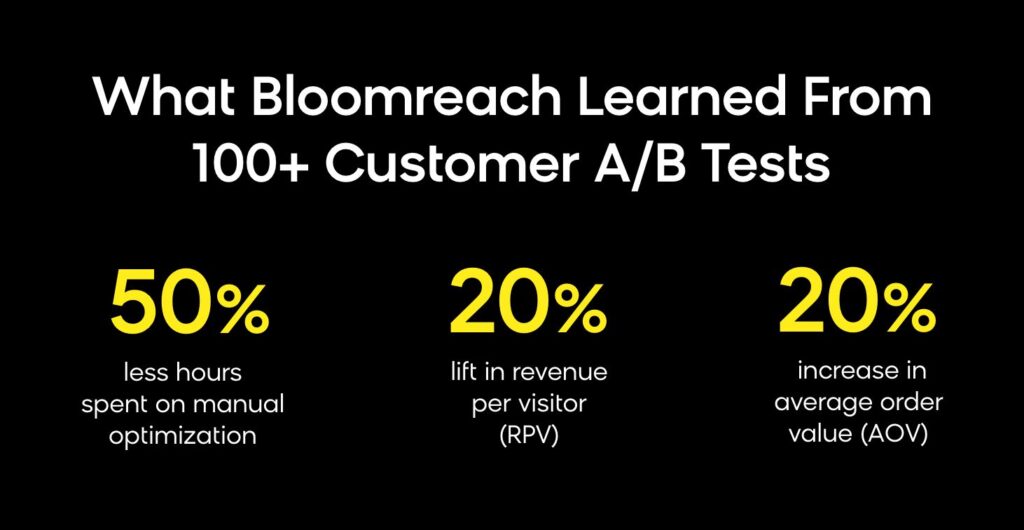Many of us remember our first experience with online discovery, whether we were searching for content, products, or knowledge. We’d play with the filters and type our tailored searches into the search bar, learning to carefully word them to trigger the results set we wanted to see.
The process behind search is pretty ingrained in our psyche. That’s because for years, the search experience centered around one goal: optimizing for the people who typed something into the search bar. However, this wasn’t a foolproof process, and despite catering our language to the search bar, we didn’t always get the results we wanted. Unfortunately, this can create missed opportunities for businesses.
The good news is that nothing stays the same forever, especially in technology, where generative AI (GenAI) has only increased the rate of innovation. After more than 25 years of search technology behaving more or less the same, we’re finally seeing a major transformation.
Enter autonomous search: a new generation of AI-powered discovery that doesn’t just respond to keywords, but understands context, adapts in real time, and engages shoppers in more natural, human ways. It combines GenAI with computational intelligence to create a system that can both understand and optimize discovery in real time.
Learn more about what autonomous search is, why it’s important for ecommerce, and what this innovation means for both merchandisers and consumers.
What Is Autonomous Search?
Autonomous search is a search system that exerts autonomous control and continuously optimizes itself via machine learning without needing manual rule tuning or other forms of intervention. This system can also take on the form of a conversational agent, which can process a lot more context than a search bar or navigation menu.

Instead of relying on hand-tuned relevance settings or keyword matching, autonomous search uses artificial intelligence (AI) to understand customer behavior, personalize search results, and adapt to changes in product catalogs and shopper intent. Every click, query, and conversion becomes a signal the system learns from, becoming more human with every interaction.
Of course, these AI agents won’t be limited to a single touchpoint. They’ll appear across the customer journey, guiding, suggesting, and responding in real time to make discovery feel more natural, contextual, and human than ever before.
Shoppers express their intent in natural, human language, and the autonomous search system responds with relevant results or guided prompts. This makes the shopping experience feel less like interacting with a rigid search engine and more like having a helpful, informed store clerk at your side.
With autonomous search, we can stop reducing search to optimization and algorithms. Having the right AI in place can turn discovery into a data-rich engine for growth, where personalization is the result. Aside from helping customers find the right products, it can assist businesses in uncovering demand patterns, spotting gaps in their assortment, and surfacing emerging trends before they hit the mainstream.
Why Is Ecommerce Search Becoming Autonomous?
Autonomous search is meeting this moment where shoppers are craving more intuitive, human experiences online. By getting away from inflexible, keyword-based structures, search becomes more human and reflects how people actually think and shop.
Below, you’ll discover why more brands are investing in the technology.
Brands Want To Get Better at Monetizing Customer Intent
Using GenAI, autonomous search understands context, surfaces the right products, and guides customers from curiosity to conversion with empathy and precision. Here’s why that works so well:
Allows People To Search How They Talk
For decades, searchers had to adjust their language to match how search engines worked. We’ve all been there: stripping down to keywords, guessing product terms, and basically, learning how to “speak machine.” Autonomous search flips this dynamic using GenAI. Now, the search bar can listen, understand conversational expressions, and respond in a way a person would.

Simply put, shoppers can use real, everyday language, like “a birthday gift for a 10-year-old who loves science,” and autonomous search picks up on emotion, context, and intent to deliver results that feel accurate and natural. This shift in product discovery will help brands build trust, encourage exploration, and assist shoppers in finding what they need, even if they don’t quite know what that is or how to describe it perfectly.
Personalizes the Whole Experience for the Shopper
Shoppers are anything but static. They’re layered, dynamic, and constantly evolving. For this reason, autonomous search just doesn’t react to a single session, but it builds a continuously expanding view of each shopper across every interaction.
According to Bloomreach research, 90% of ecommerce professionals believe better personalization could directly improve key metrics, and 85% of the same professionals say it’s essential to their company’s success over the next three to five years. Autonomous search is one approach that helps brands meet this expectation by weaving together customer behavior, preferences, and real-time signals to deliver product discovery journeys that feel personal.
Converts Prospects With Conversation
Even the most motivated shoppers hit moments of hesitation in the buying journey: comparing options, second-guessing details, or weighing whether to take advantage of certain promotions. Autonomous search sees these micro-moments as opportunities for brands.

By recognizing behavioral signals like long-abandoned carts, repeat views, or refining search queries multiple times, autonomous search can recognize when a shopper needs additional support. In those moments, it activates the computational intelligence behind the conversational shopping agent, which is ready to answer questions, surface product comparisons, or give the lowdown on shipping policies or current promotions. Rather than making the shopper figure out these purchasing decisions on their own, the agent meets them with in-the-moment guidance that reduces friction and turns hesitation into confident, high-converting action.
Merchandising Has Broken Outside the Search Box With GenAI
Merchandising is no longer tied to fixed calendars, preplanned campaigns, or seasonal pushes. In a digital world where shopper behavior shifts overnight and trends emerge without warning, the traditional model of search and merchandising simply can’t keep up. This is where autonomous search shines in making merchandising more responsive, proactive, and strategic.
Let’s break it down:
React in Real Time to Trends
From viral TikTok moments to unexpected shifts in lifestyles or economics, shopper demand can change overnight. Autonomous search detects those shifts as they happen and elevates relevant products automatically without requiring merchandisers to intervene manually.
By analyzing live signals from search queries, click-through rates, and time spent on product pages, the system continuously aligns product discovery with what shoppers are interested in right now. This means merchandisers no longer have to guess what might trend and can respond directly to what’s getting traction in the moment.
Bridge the Gap Between Marketing and Merchandising
Ecommerce merchandising has always worked in tandem with marketing, but that relationship has often been campaign-based, or in many cases, merely reactive to what’s happening at the company. Autonomous search changes the relationship between marketers and merchandisers, however.

When AI surfaces a rise in certain search queries or a spike in filter usage around an attribute (e.g., size, price, or material), merchandisers gain real-time visibility into emerging trends. That insight can be shared upstream to influence promotional focus, content creation, or marketing channel usage. With autonomous search feeding this continuous loop of customer demand, merchandisers can become a true strategic partner to their marketing counterparts, staying in sync with what shoppers currently want.
Turn Search Into a Source of Demand Insight
Every “no results” moment reveals an opportunity. With autonomous search, merchandisers can tap into a constant flow of shopper signals to see which terms drive high engagement, where search is falling short, and how intent is shifting over time.
These performance insights help teams uncover gaps in product data, flag categories where interest is outpacing supply, and surface missed opportunities in how products are labeled or positioned, unlocking a clearer view of demand that drives smarter assortment, buying, and go-to-market decisions.
What Does Autonomous Search Empower Merchandisers To Do?
Autonomous search helps reshape how merchandising teams operate, just as much as it improves how shoppers discover products. By helping merchandisers respond with speed and precision, there will be less firefighting and more foresight for your team.
Adapt to the Complex Shopping Journey
Shopper journeys are more complex than ever. They bounce between channels — social, mobile, and in-store — while navigating overwhelming choices and constantly shifting expectations. That means merchandisers need tools that move as fast as their customers do.
Autonomous search combines product signals with real-time behavioral data to automatically adjust product grids and recommendations based on shopper intent. This continuous optimization ensures that discovery always feels relevant and helps customers find what they’re looking for faster without the guesswork.
Spot Opportunities and Gaps
Another key advantage of autonomous search is its ability to surface high-intent queries that aren’t converting, flagging potential issues with product discoverability or catalog gaps. If multiple shoppers search for something that isn’t available, merchandisers can quickly spot the pattern and take action to meet that demand.

What makes this so valuable is the speed of response. Instead of waiting for end-of-month reports, teams can identify underperforming queries and course-correct in real time, whether by adding missing SKUs, refining product data, or rethinking how items are categorized and shown. It’s a meaningful shift from reactive cleanup to proactive merchandising.
Run Campaigns Without the Busy Work
Campaign launches are often slowed by a lack of visibility into what customers are currently shopping for, relying on static rules that don’t accurately reflect buyer behavior, or manually curating product selections that fit the campaign theme or trend. But with computational intelligence, autonomous search treats these as unknown parameters to be learned over time and uses shopper behavior and interactions to make smarter predictions.
When combined with GenAI, the system can also probe for those unknowns conversationally — for example, prompting with clarifying questions that help surface what the shopper wants. So, if interest in a product spikes, like graduation gifts in the spring or SPF skincare in the summer, autonomous systems adjust automatically. This helps merchandisers stay in sync with what shoppers care about and subverts the idea that merchandisers have to scramble to react to changes. With autonomous search doing the heavy lifting, product discovery feels united across search results, category pages, and product grids.
Why Bloomreach Autonomous Search Stands Apart
Not all AI search is created equal. While many platforms are just beginning to layer generative models onto outdated systems, Bloomreach was built with autonomous search at its core, and it shows in the results our customers experience.
See why leading brands choose Bloomreach:
Proven Impact For Brands and Retailers
Across more than 100 A/B tests, Bloomreach customers saw positive numerical results, such as a 20% lift in revenue per visitor (RPV), when shifting from transactional to conversational discovery. Merchandising teams also reported 50% fewer hours spent on manual optimization, thanks to AI that fine-tunes search performance in real time. Last but not least, guided discovery journeys, built around shopper intent, delivered a 20% increase in average order value (AOV).

Built for Ecommerce From Day One
Other search systems require weeks of learning from your website via pixel or rely on generic internet data from GenAI solutions like ChatGPT. On the other hand, Bloomreach is trained on billions of ecommerce-specific signals from the day you launch, acquired from our decade-plus of experience in the industry. Our product discovery solution understands product nuances and shopper behavior across verticals, powering 25% of ecommerce experiences in the US and UK.
Allows for Full Personalization, Not Just Relevance
Relevance gets a product in front of someone, but personalization makes sure it’s the right product for that particular shopper. Bloomreach uses real-time signals, such as past searches, purchase history, and click behavior, to tailor search results that reflect individual context, not just generic keyword match logic. Because Bloomreach is trained on billions of real-world shopper interactions, personalization can start immediately, as the system learns your unique business.
Bloomreach transforms your search bar into a conversational genius — one that listens, adapts, and guides shoppers with clarity and confidence. Our autonomous search breaks the limits of traditional product-first thinking, enabling truly human-centered product discovery experiences.
Want to fix your search problem? Explore the ins and outs of Bloomreach.













